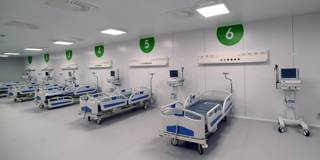COVID-19 is forcing cities around the world to face the reality that they're ill-prepared for emergencies. It’s time to reinvent the modern urban center with an eye toward fully equipped health systems and state-of-the-art digital infrastructure that incorporates unanticipated risks.
MILAN – Our cities will not be the same after COVID-19. Nor should they be. In Italy, as elsewhere, the public-health crisis has put us on the defensive. Our hospitals have been inadequate. And our cities, having been planned to meet our needs at a particular moment that looks nothing like the present, have fueled contagion.
As a result, the coronavirus is shutting down the engine of ideas and interactions that drives social dynamism and economic growth: the urban center. And, because contagion may turn out to be a long-term or chronic threat, how to adapt urban design and management accordingly has become a salient question for architects.
Planning correctly means designing an evolving system with limits and a clear view of risks. The lack of hospitals has led to a frenetic and costly race to build them in places not designed with health in mind. In Italy, the government already has considered building hubs in the center and south of the country where health infrastructure is weak. And yet more than 75% of Italy’s COVID-19 cases have occurred north of Tuscany, where, even with the country’s most sophisticated health infrastructure, the region was overwhelmed by the need for urgent care.

MILAN – Our cities will not be the same after COVID-19. Nor should they be. In Italy, as elsewhere, the public-health crisis has put us on the defensive. Our hospitals have been inadequate. And our cities, having been planned to meet our needs at a particular moment that looks nothing like the present, have fueled contagion.
As a result, the coronavirus is shutting down the engine of ideas and interactions that drives social dynamism and economic growth: the urban center. And, because contagion may turn out to be a long-term or chronic threat, how to adapt urban design and management accordingly has become a salient question for architects.
Planning correctly means designing an evolving system with limits and a clear view of risks. The lack of hospitals has led to a frenetic and costly race to build them in places not designed with health in mind. In Italy, the government already has considered building hubs in the center and south of the country where health infrastructure is weak. And yet more than 75% of Italy’s COVID-19 cases have occurred north of Tuscany, where, even with the country’s most sophisticated health infrastructure, the region was overwhelmed by the need for urgent care.